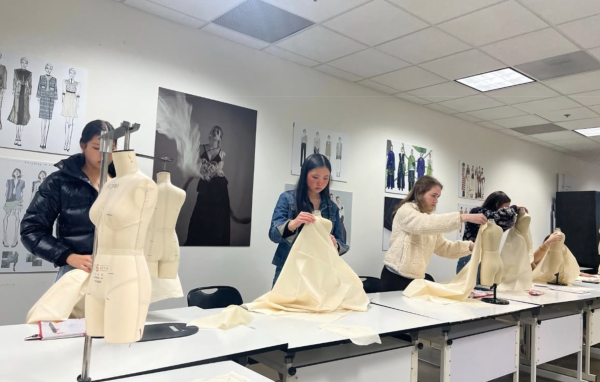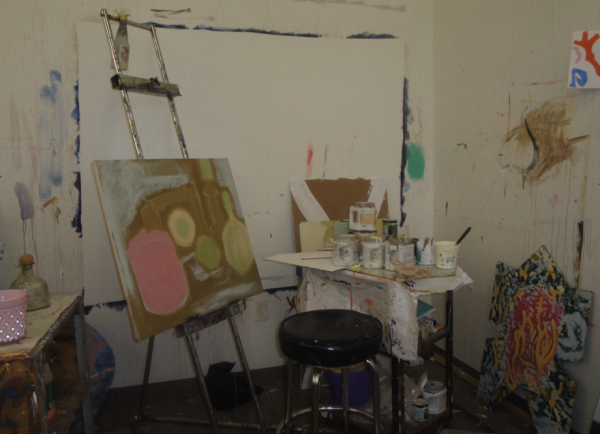Westminster alumni photographs Beyoncé for Vogue
Last month, the renowned fashion forum Vogue released their September issue featuring Beyoncé on the cover. Tyler Mitchell, a Westminster graduate of the class of 2013, shot the cover, making him the first black photographer, as well as one of the youngest, to shoot the cover of an issue of Vogue.
Mitchell started exploring his interests in photography and the visual arts from a young age. During his time at Westminster, he studied under Westminster’s current visual arts department chair Benjamin Steele. One of the main focuses of the arts department at Westminster is to encourage students to discover a passion for the arts through exposure to a variety of medias, while also allowing room to explore their own personal interests in regards to the arts.
“I would say that an inner drive or passion that makes someone want to explore an idea or culture is what makes them a dedicated artist,” said Steele. “Tyler only ever took one art class at Westminster, which was AP Studio Art and Digital Imaging Photography and Graphic Design. It is rare for a student to just get into that class, but it was a point in time when the class was fairly new at the school.” Although he only enrolled in one art course offered at Westminster, Mitchell worked towards pursing his passion for photography outside of school during his adolescence.
“[Mitchell] was already doing a lot of photography work by the time he was a senior,” Steele said. “What was rare about him is that he was already finding subjects and people out in the world that interested him in some way. He then would go on to create works and documentaries about these subjects.” While Mitchell is technically gifted, his innate sensitivity and passion in his work is what makes him stand out as an artist.
“Tyler does something rare in his line of work, which is combining commercial photography, like shooting the cover of a magazine and having photography as a day job, with the fine art world,” said Steele. “He has managed to get a large corporation like Vogue to hire him as a creative entity.” Despite the prestige of a corporation like Vogue, Mitchell focuses on expression in his works rather than just completing a photoshoot. Not only did Vogue select Mitchell to be a photographer for their magazine, but cover model Beyoncé specifically sought out Mitchell to depict her in a way that would emphasize African American culture and represent diversity in the arts.
“Diversity to me is the necessity of having multiple perspectives,” said Michael Reese, a Westminster Photography 1 & 2 teacher. “If you circumnavigate the globe, you will find different people in different places, all with different cultures and different experiences. Diversity has always been there, but now is the time where we have to recognize that diversity is important.” Reese emphasizes the necessity for diversity on campus through his role as an advisor for the black affinity group and for the film diversity club.
“Tyler has a certain sensitivity towards representation and diversity that Beyoncé specifically looked for,” said Reese. “His work is an opportunity to tell a more honest story about the subject matter. It deals with years of people outside of the culture telling the story.” In the history of Vogue’s 126 years as an established fashion magazine, there has never been another black photographer before Mitchell.
“It is not malicious that there hasn’t been a black photographer for Vogue before, but when you do not have diversity behind the scenes, fair representation falls through the cracks,” said Reese. “Maybe what Vogue needs is someone like Tyler not only to be a photographer but also someone who wants to hire photographers like Tyler.” Mitchell’s work at Vogue and with Beyoncé made history for its representation and diversity in the project. In past years, many breakthroughs concerning representation have occurred in the arts, especially in cinema.
“Black Panther is a great example of a diverse film that fits in the realm of superheroes yet brings so much more in terms of representation,” said Reese. “It is set in a make-believe world in Africa, but it speaks to the broader culture in the sense that there hasn’t really been a black superhero to the magnitude of what Black Panther is and became. Even though the film is fantasy, we African Americans are shaped by that. I think that this is similar to Tyler’s works as a part of the diversity arc in imagery and filmmaking.” Similar to how Mitchell’s project as an African American man captured a level of sensitivity and passion regarding representation, Black Panther also achieved this due to the diversity both on screen and behind the scenes.
“There has been a lot of media created about the black experience through not black eyes,” said Reese. “However, Black Panther was directed by Ryan Coogler, an African American film director. Getting a black director and a black lead and romantic interest makes it one of the most honest portrayals of the black experience.” In addition to Ryan Coogler and Tyler Mitchell, other inspiring African American artists include photographer Gordon Parks and film directors Shonda Rhimes and Jordan Peele. Apart from Vogue, Mitchell continues to develop his passion through other projects as well.
“Tyler published a great book called El Paquete, which is a documentation of skater culture in Cuba,” said Steele. “He also shoots ad campaigns, music videos, and fashion lines. Again, he stands out as an artist because these companies tend to focus on identifying young creative professionals and showcasing their take on their brand, rather than just asking them to shoot a seasonal line of clothing.” Mitchell continues to impact others through his work by maintaining a unique sense of curiosity and sensitivity towards each subject he addresses. In a recent article with Vogue, Mitchell talked about his career as a young photographer.
“For so long, black people have been considering things,” said Mitchell. “With my work, I’m looking to vitalize and elevate the black body… I want to open the eyes of the kids younger than me, show them that they can do this too.”



